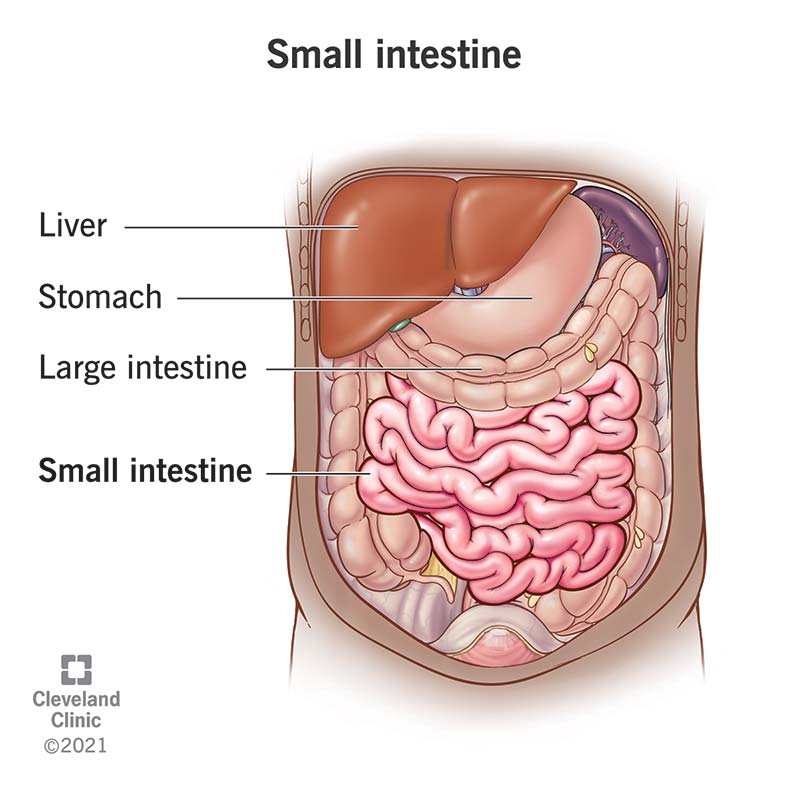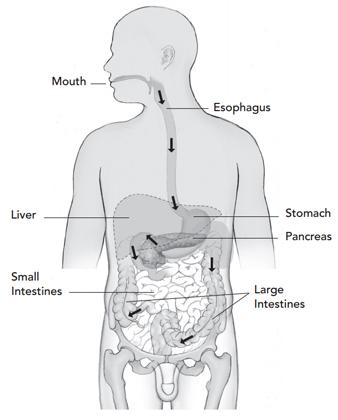The picture also shows some accessory digestive organs, such as the salivary glands, liver, gall bladder, and pancreas. The different organs and structures are briefly discussed below. The rest of this chapter will cover the details of each organ. Figure 21.2.1 21.2. 1: Structures of the Digestive System.
Human Anatomy | Body Systems, Organs & Diagrams – Video & Lesson Transcript | Study.com
Correctly label the following parts of the digestive system. Correctly label the following tissues of the digestive tract. Correctly label the following parts of the peritoneum. Drag each label into the appropriate position in order to identify whether the term or item is involved with chemical or mechanical digestion.

Source Image: study.com
Download Image
The function of the digestive system is to break down the foods you eat, release their nutrients, and absorb those nutrients into the body. Although the small intestine is the workhorse of the system, where the majority of digestion occurs, and where most of the released nutrients are absorbed into the blood or lymph, each of the digestive system organs makes a vital contribution to this process.

Source Image: quizlet.com
Download Image
Organoid culture & stem cells – all infos – LubioScience Jul 30, 2022The function of the digestive system is to break down the foods you eat, release their nutrients, and absorb those nutrients into the body. Although the small intestine is the workhorse of the system, where the majority of digestion occurs, and where most of the released nutrients are absorbed into the blood or lymph, each of the digestive system organs makes a vital contribution to this process.

Source Image: my.clevelandclinic.org
Download Image
Correctly Label The Following Tissues Of The Digestive Tract.
Jul 30, 2022The function of the digestive system is to break down the foods you eat, release their nutrients, and absorb those nutrients into the body. Although the small intestine is the workhorse of the system, where the majority of digestion occurs, and where most of the released nutrients are absorbed into the blood or lymph, each of the digestive system organs makes a vital contribution to this process. Fat digestion yields fatty acids and glycerol. Protein digestion yields amino acids. Both digestive processes a. occur inside cells in most animals. b. add a water molecule to break bonds. c. require a low pH resulting from HCl production. d. consume ATP.
Small Intestine: Function, anatomy & Definition
Question: Correctly label the following tissues of the digestive tract. 29 Muscularis mucosae Mucosa Serosa Muscularis externa Lamina propria Stratified squamous epithelium Submucosa Simple cuboidal epithelium. There are 3 steps to solve this one. Chapter 25. The Digestive System Part 1 (Sections 1-3) Homework Assignment Flashcards | Quizlet

Source Image: quizlet.com
Download Image
A&P Content for Final Flashcards | Quizlet Question: Correctly label the following tissues of the digestive tract. 29 Muscularis mucosae Mucosa Serosa Muscularis externa Lamina propria Stratified squamous epithelium Submucosa Simple cuboidal epithelium. There are 3 steps to solve this one.

Source Image: quizlet.com
Download Image
Human Anatomy | Body Systems, Organs & Diagrams – Video & Lesson Transcript | Study.com The picture also shows some accessory digestive organs, such as the salivary glands, liver, gall bladder, and pancreas. The different organs and structures are briefly discussed below. The rest of this chapter will cover the details of each organ. Figure 21.2.1 21.2. 1: Structures of the Digestive System.

Source Image: study.com
Download Image
Organoid culture & stem cells – all infos – LubioScience The function of the digestive system is to break down the foods you eat, release their nutrients, and absorb those nutrients into the body. Although the small intestine is the workhorse of the system, where the majority of digestion occurs, and where most of the released nutrients are absorbed into the blood or lymph, each of the digestive system organs makes a vital contribution to this process.

Source Image: lubio.ch
Download Image
AP 2 – Accessory digestive organs Flashcards | Quizlet Jul 31, 2022The oral cavity, or mouth, is the point of entry of food into the digestive system, illustrated in Figure 1. The food consumed is broken into smaller particles by mastication, the chewing action of the teeth. All mammals have teeth and can chew their food. Figure 1. Digestion of food begins in the (a) oral cavity.

Source Image: quizlet.com
Download Image
Frequent Urination, A Sign That The Embryo Has Successfully Attached? Jul 30, 2022The function of the digestive system is to break down the foods you eat, release their nutrients, and absorb those nutrients into the body. Although the small intestine is the workhorse of the system, where the majority of digestion occurs, and where most of the released nutrients are absorbed into the blood or lymph, each of the digestive system organs makes a vital contribution to this process.

Source Image: bocahindonesia.com
Download Image
The Digestive Tract | Cystic Fibrosis Foundation Fat digestion yields fatty acids and glycerol. Protein digestion yields amino acids. Both digestive processes a. occur inside cells in most animals. b. add a water molecule to break bonds. c. require a low pH resulting from HCl production. d. consume ATP.

Source Image: cff.org
Download Image
A&P Content for Final Flashcards | Quizlet
The Digestive Tract | Cystic Fibrosis Foundation Correctly label the following parts of the digestive system. Correctly label the following tissues of the digestive tract. Correctly label the following parts of the peritoneum. Drag each label into the appropriate position in order to identify whether the term or item is involved with chemical or mechanical digestion.
Organoid culture & stem cells – all infos – LubioScience Frequent Urination, A Sign That The Embryo Has Successfully Attached? Jul 31, 2022The oral cavity, or mouth, is the point of entry of food into the digestive system, illustrated in Figure 1. The food consumed is broken into smaller particles by mastication, the chewing action of the teeth. All mammals have teeth and can chew their food. Figure 1. Digestion of food begins in the (a) oral cavity.